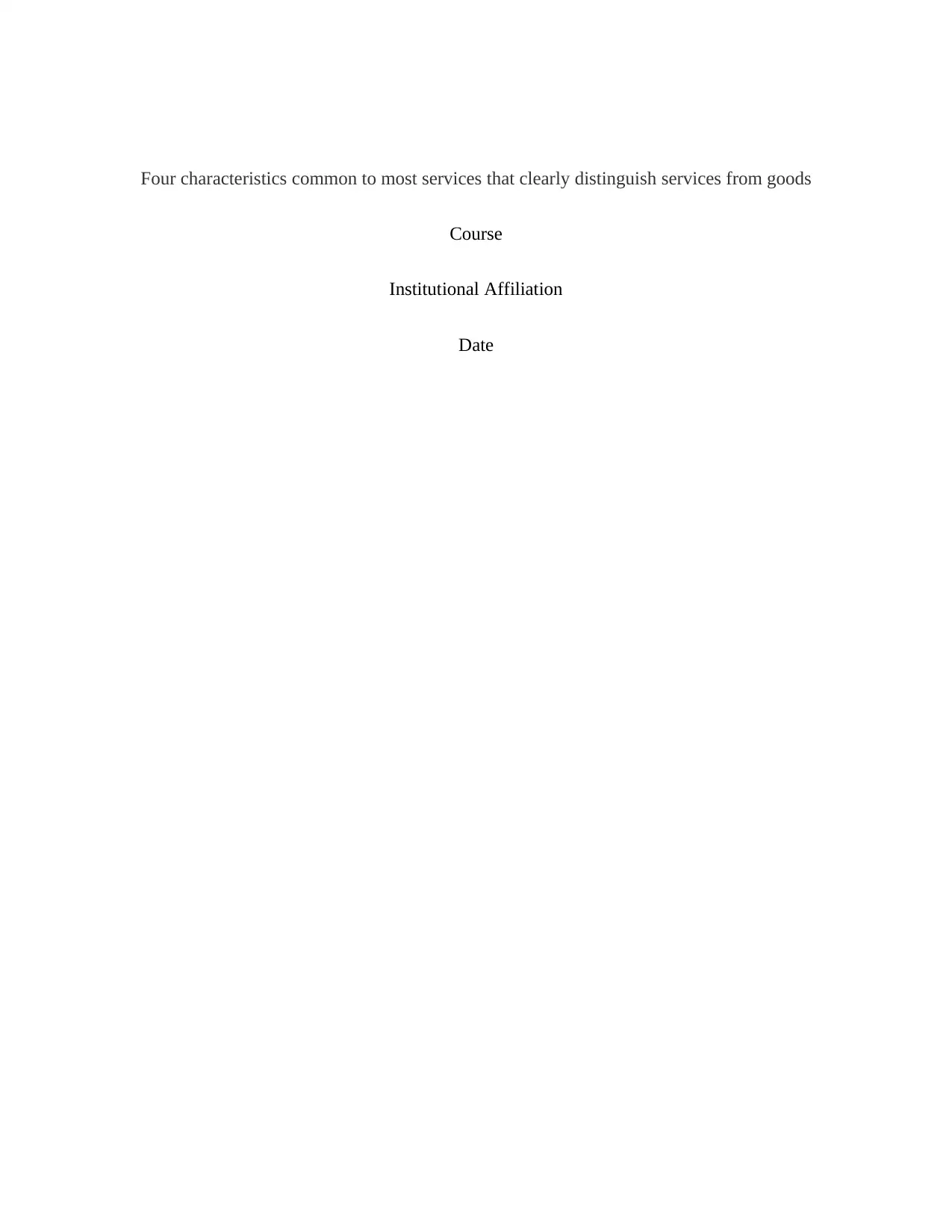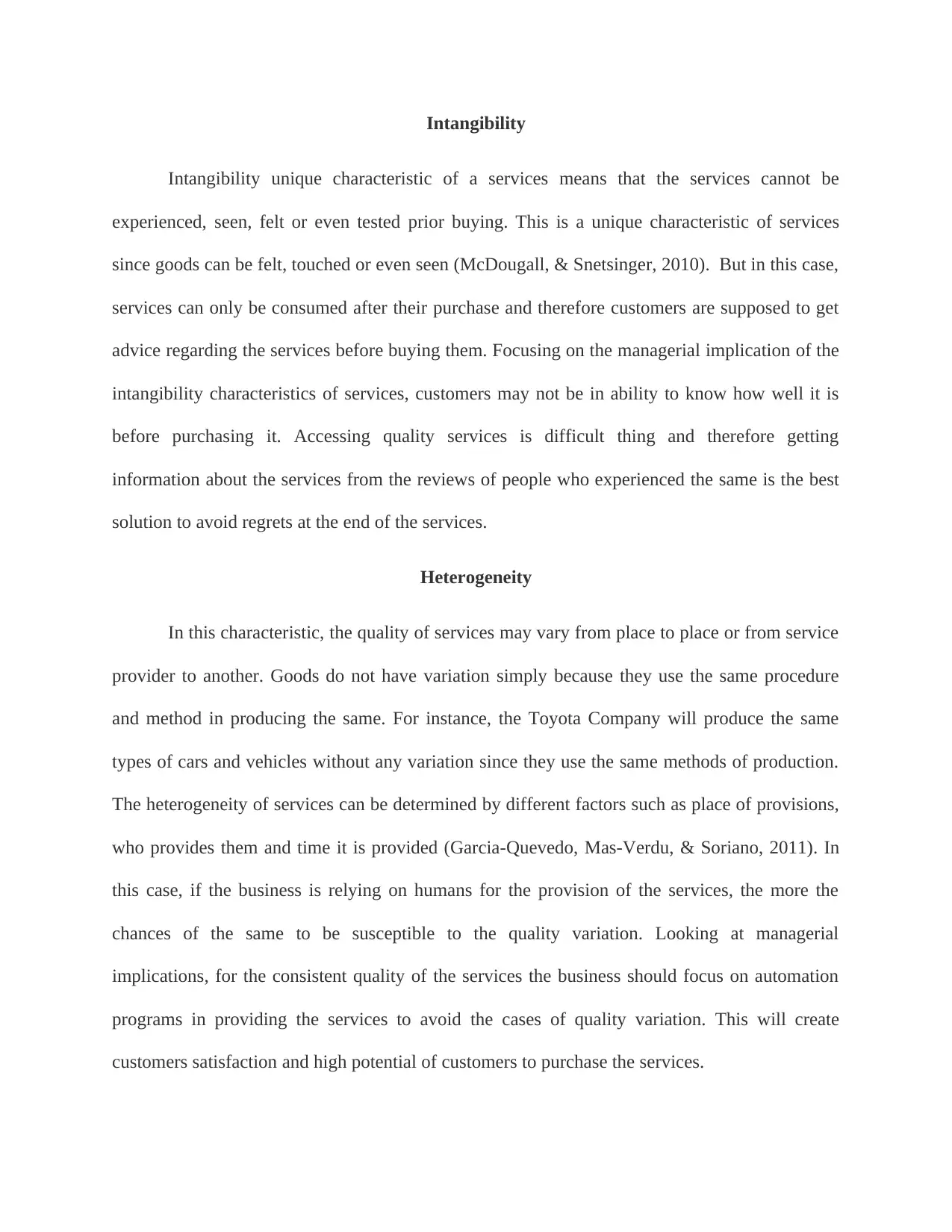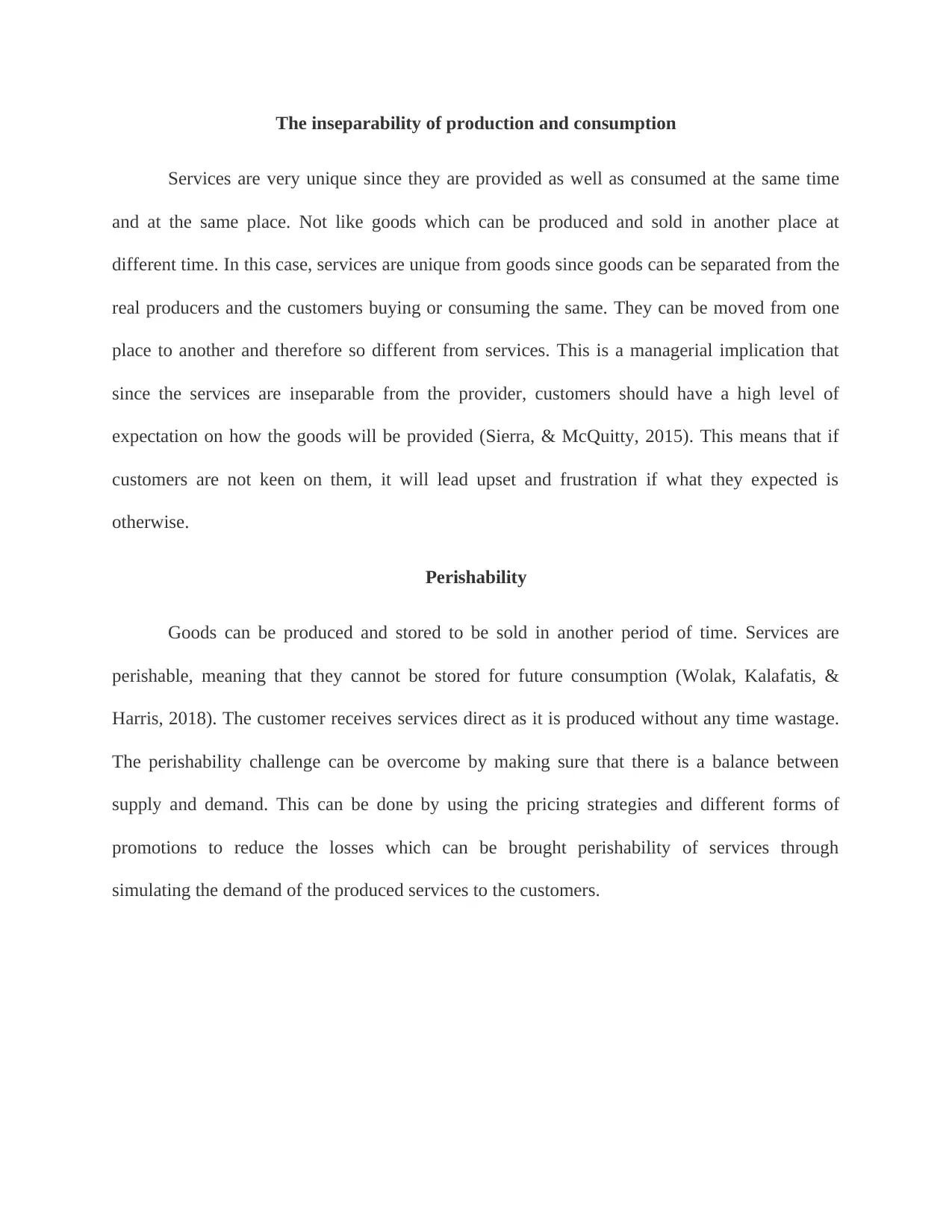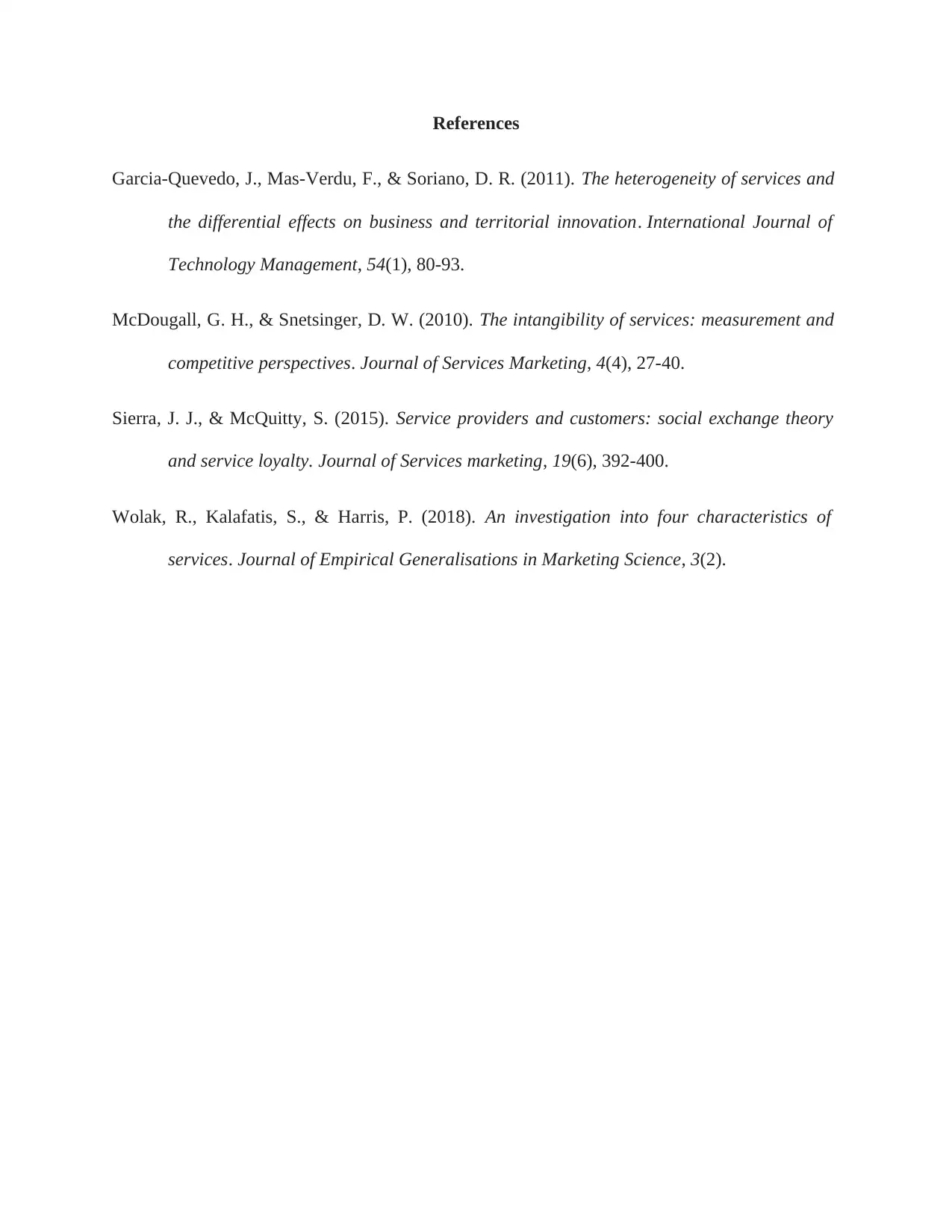Report on the Four Key Characteristics Distinguishing Services
VerifiedAdded on 2023/06/03
|4
|757
|138
Report
AI Summary
This report examines four key characteristics that distinguish services from goods: intangibility, heterogeneity, inseparability of production and consumption, and perishability. Intangibility highlights the inability to experience a service before purchase, necessitating customer reliance on advice and reviews. Heterogeneity addresses the variability in service quality, emphasizing the need for automation to ensure consistency. The inseparability of production and consumption underscores the simultaneous provision and consumption of services, requiring high customer expectations. Perishability, the inability to store services, necessitates strategies like pricing and promotion to balance supply and demand, mitigating potential losses. The report provides insights into the managerial implications of each characteristic, emphasizing strategies for service quality and customer satisfaction.
1 out of 4










![[object Object]](/_next/static/media/star-bottom.7253800d.svg)